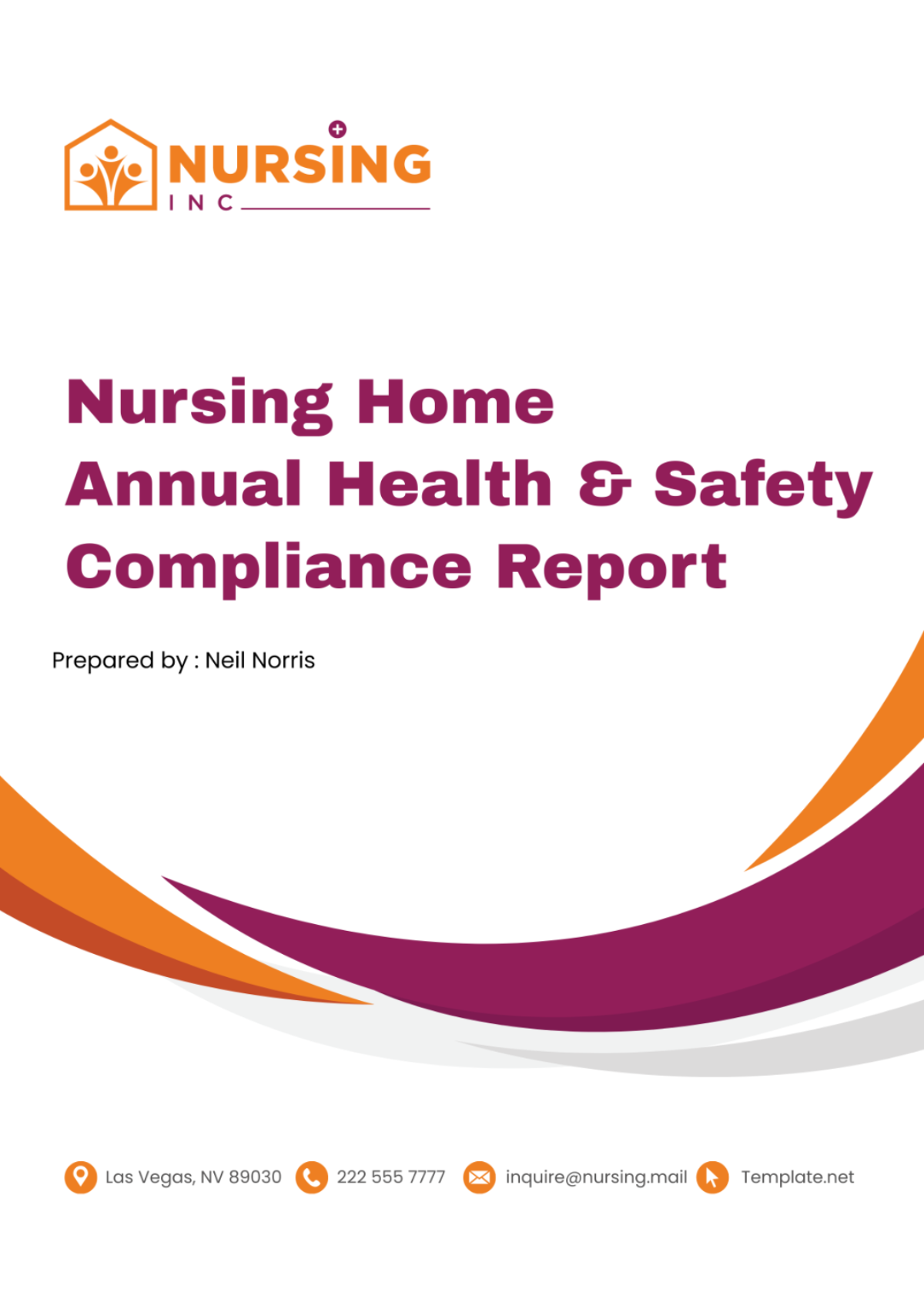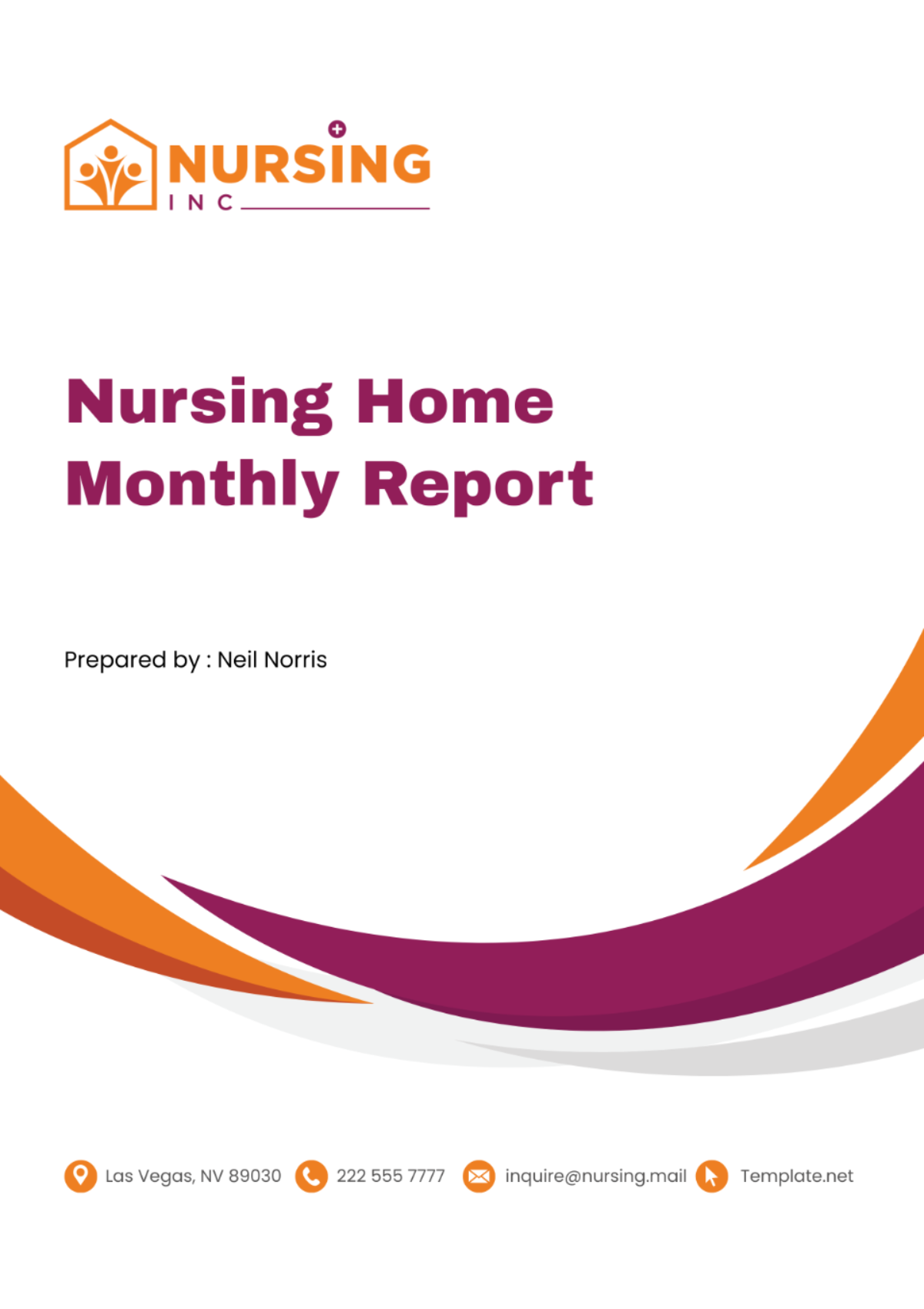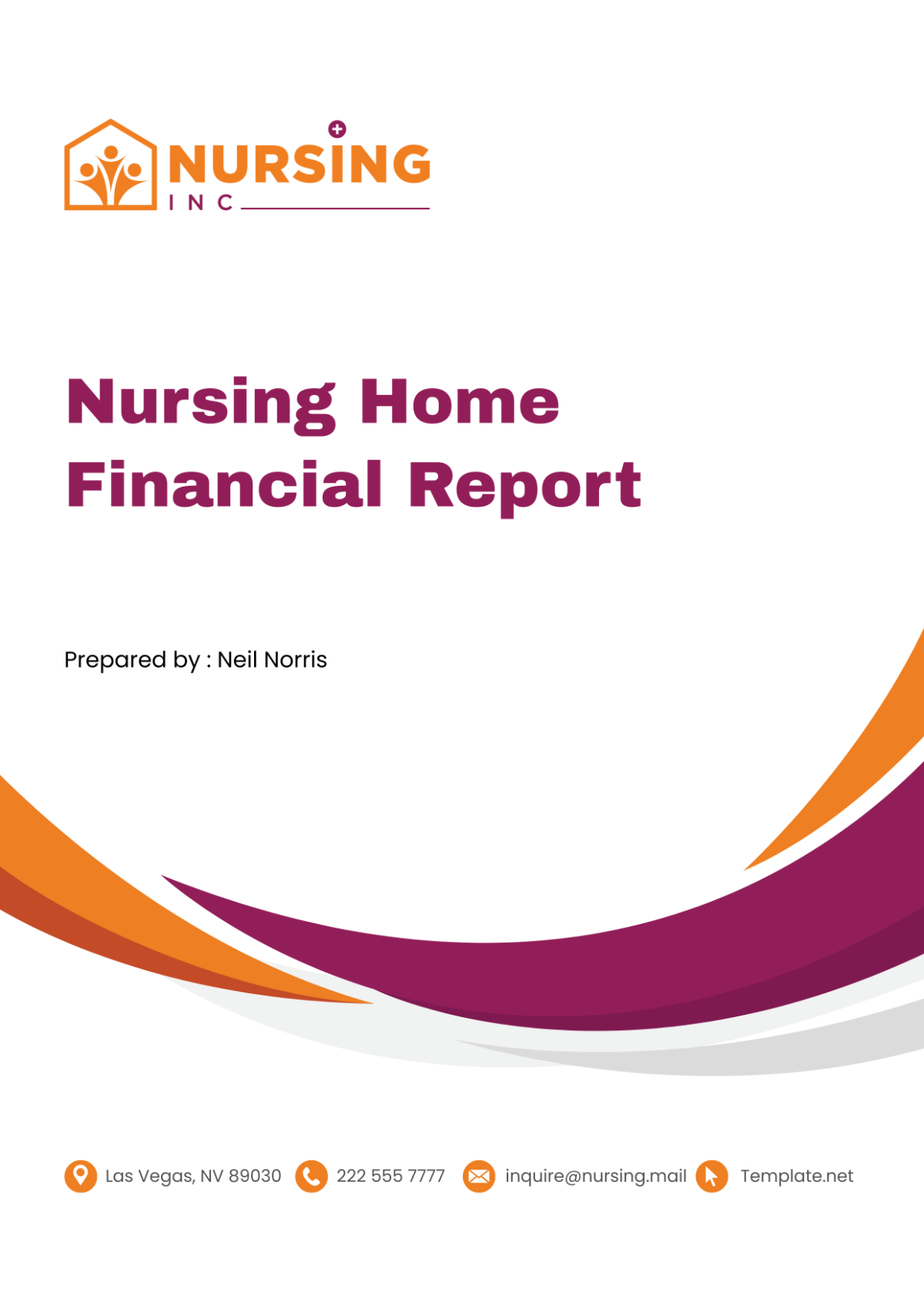Nursing Home Status Report
I. Executive Summary
This report provides an in-depth analysis of the current status and performance of [Your Company Name] for the fiscal year. It includes various critical aspects such as the overall occupancy rate, financial performance, staffing, and resident satisfaction.
Our goal, which is rooted in the principle of continuous improvement, is to consistently strive to provide the most superior quality of care possible for our residents. We are committed to enhancing their life quality in every aspect, ensuring their comfort, safety, happiness, and overall well-being. At the same time, we are mindful of ensuring that our nursing home is capable of sustaining these high standards in the long term. Our focus includes financial prudence, efficient operations, and making sure our resources are adequate to meet the demands of our mission. This balancing act between delivering superior care and maintaining sustainability is our constant objective.
II. Occupancy Rate
Month | Occupancy Rate (%) |
|---|---|
January | 85 |
February | 88 |
March | 90 |
April | 93 |
May | 92 |
The table displays the specific rates of occupancy for a certain entity during the course of a five-month timeframe, starting in January and ending in May. Commencing the analysis with the month of January, the occupancy rate was recorded at 85%, a fairly high percentage. Following January, there is a steady and consistent increase in the abovementioned rate. This increase progresses consistently until the month of April, where the occupancy rate reaches its possible peak at 93%, a significant jump from the 85% recorded in the beginning months.
However, following the peak in April, there is a slight drop or dip observed in the occupancy rate for the following month of May, where it decreases marginally to 92%. Despite the marginal decrease in May, the data from these occupancy rates, as observed and recorded over the course of these five months, does still suggest, overall, a positive trend or upswing in the occupancy rates during this period in question. April stands out as the month with the highest occupancy rate recorded during this particular five-month period.
III. Financial Performance
The financial viability of [Your Company Name] ensures that we can continue providing top-notch care to our residents. The attached table explains our revenue and expense structure for the year.
We have been diligently applying ourselves, making every effort to improve our monetary functioning within the system. Our dedication and hard work have resulted in a noticeable advancement which we are thrilled to share. We are very proud to announce that we have seen a 5% increase in our total revenue by comparing it to that of the previous year, thus marking an encouraging trend of annual growth.
Revenues ($) | Expenses ($) | |
|---|---|---|
1st Quarter | 250,000 | 200,000 |
2nd Quarter | 260,000 | 210,000 |
3rd Quarter | 270,000 | 215,000 |
4th Quarter | 280,000 | 220,000 |
Total | 1,060,000 | 845,000 |
IV. Staffing
The success of a nursing home significantly relies on having an efficient staffing component. This can be comprehensively observed in the following table which outlines and expounds our present staffing levels. The table also provides a measure, specifically the ratio of our staff members to the residents, that holds crucial importance. This ratio is an indispensable parameter that reflects our capability of providing not just regular, but top-notch and all-inclusive care for our residents. Thus, the table aids in evaluating our performance and efficiency in this regard.
At [Your Company Name], we prioritize the constant assurance that the number of our staff is adequate to not only fulfill the needs of our residents effectively but also to meet all requirements stipulated by the regulatory authorities.
Position | Number of Staff |
|---|---|
Nursing Staff | 30 |
Administrative Staff | 10 |
Support Staff | 15 |
Therapists | 5 |
Others | 5 |
V. Resident Satisfaction
The measurement of our success is gauged on the basis of the overall well-being and happiness observed among our residents. As a part of our regular operations, we have developed consistent efforts in collecting feedback provided by our residents. This is done through the employment of certain platforms such as satisfaction surveys which aid us in understanding their needs, concerns, and overall satisfaction more comprehensively.
Our latest surveys showed a resident satisfaction score of 85%, an increase from the score of 80% from the previous quarter. We attribute this positive trend to the improved capacity of our facility and the efforts of our devoted staff.
VI. Recommendations
Enhance Green Spaces: Develop additional outdoor recreational areas such as walking paths, gardens, or seating areas to provide residents with more opportunities for relaxation and enjoyment of nature.
Upgrade Recreational Equipment: Invest in new equipment or upgrade existing facilities such as sports courts, playgrounds, or fitness stations to cater to a wider range of interests and physical abilities.
Diversify Dining Options: Expand the variety of cuisines offered in meal plans to accommodate diverse dietary preferences and cultural backgrounds, ensuring residents have access to a broader selection of nutritious and flavorful meals.
Introduce Theme Nights: Implement themed dining nights where residents can experience different cuisines or cultural celebrations, fostering a sense of excitement and anticipation around meal times.
Facilitate Culinary Workshops: Organize cooking classes or culinary demonstrations to engage residents in the meal preparation process, promote social interaction, and empower them with new culinary skills.
Increase Social Engagement: Host a wider range of social events and activities, including movie nights, art classes, book clubs, or guest lectures, to cater to varying interests and preferences among residents.
Community Outings: Arrange regular outings to local attractions, events, or cultural sites to provide residents with opportunities for socialization, exploration, and meaningful experiences outside of the facility.
Enhance Common Areas: Revitalize communal spaces such as lounges, libraries, or game rooms with comfortable furnishings, engaging decor, and amenities to encourage socializing and leisure activities.
Implement Resident-Led Initiatives: Empower residents to take an active role in organizing and leading social events or interest groups based on their own hobbies, passions, or expertise.
Professional Development Workshops: Offer educational workshops or seminars on topics such as wellness, technology, or personal development to enrich residents' lives and stimulate intellectual engagement.
Quality Assurance Measures: Implement regular inspections and audits of cleaning services to ensure consistency, thoroughness, and adherence to high standards of cleanliness throughout the facility.
Staff Training Programs: Provide ongoing training and education for cleaning staff to enhance their skills, efficiency, and understanding of best practices in maintaining a clean and hygienic environment.
Feedback Mechanisms: Establish channels for residents to provide feedback on cleaning services, such as suggestion boxes or satisfaction surveys, to continually assess and address any concerns or areas for improvement.
Environmental Sustainability: Incorporate eco-friendly cleaning products and practices to minimize environmental impact and promote a healthier living environment for residents and staff alike.
Technological Solutions: Explore the use of technology, such as automated cleaning systems or monitoring devices, to streamline cleaning processes, improve efficiency, and ensure consistent service delivery.
Regular Medication Reviews: Schedule periodic medication reviews with healthcare professionals to assess residents' medication regimens, optimize dosages, and minimize the risk of adverse reactions or drug interactions.
Individualized Medication Management Plans: Develop personalized medication management plans for each resident, taking into account their specific needs, preferences, and medical history to ensure safe and effective medication administration.
Medication Reminder Systems: Implement systems or tools to remind residents of their medication schedules, such as pill organizers, automated alerts, or medication management apps, to promote adherence and reduce missed doses.
Collaboration with Healthcare Providers: Foster collaboration and communication with residents' healthcare providers to ensure continuity of care, exchange relevant information, and address any concerns or challenges related to medication management.
Education and Support: Provide residents and their families with educational resources, counseling, and support services to promote understanding, compliance, and confidence in managing medications effectively.
VII. Conclusion
Based on the comprehensive details and information gathered in this report, our recommendation leans towards making an additional investment. This is suggested with the crucial objective of facilitating the improvements that have been proposed and endorsed by the report. Beyond that, an emphasis should be placed on development programs dedicated to the staff members.
Over an extended period of time, there is a prevailing belief that such a proposed course of action can make a significant contribution towards improving the standards of care that are provided within the nursing home environment.































